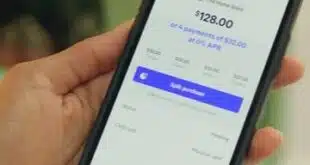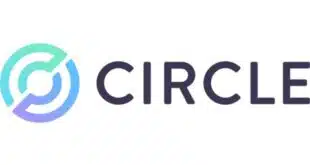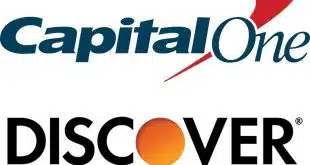PayPal and other non-banks got out of the gate fast to build burgeoning person-to-person payments empires. Is Zelle the banks’ savior?
In a few months, the battle between banks and non-banks for the lion’s share of the exploding person-to-person payments market will escalate to a new level. That’s when Zelle, the P2P network from bank-owned Early Warning Services LLC, will debut.
Zelle is the rebranded P2P service originally known as clearXchange, which was founded by some of the nation’s biggest banks. ClearXchange was more of a technological platform than a high-profile consumer brand.
But while the banks honed clearXchange, non-banks such as PayPal Holdings Inc. and Square Inc. moved in to grab big pieces of the P2P market, which totaled $482 billion in transaction volume in 2016, up 27% from a year earlier, according to Pleasanton, Calif.-based Javelin Strategy & Research. Javelin’s figures include domestic wire transfers.
Now, close industry observers expect the emergence of the new Zelle to provide banks with another big stick to swing against non-bank P2P entrants, of which PayPal’s Venmo is probably the most successful.
During 2016’s third quarter, Venmo processed $4.9 billion in transactions, up 131% from the same period a year earlier. As of October, San Jose, Calif.-based PayPal, which declined to comment for this story, projected Venmo to be on track to process $20 billion in payments in 2016, up from about $7.5 billion a year earlier.
Venmo’s success is the result of three factors that play well with consumers, payment experts say: ease of use, a distinctive brand, and free pricing. To open a Venmo account consumers need only register a debit or prepaid card or existing bank account as their account’s funding source.
Venmo’s business model has been such a hit with consumers, especially Millennials, that it has helped make the brand synonymous with P2P payments, in much the same way Google has become a part of consumers’ vernacular for Internet searches.
‘Not Just the Big Banks’
The most effective way for banks to compete with Venmo is to match its consumer-friendly approach, say close observers of the P2P payments scene.
Up until now, bank-owned P2P systems have been fragmented from a usage and branding standpoint. Consumers who want to send a payment to a friend or family member have had to transact with someone who has an account at the same bank or at another bank within the users’ P2P network, a la the old clearXchange.
Plus, bank-owned P2P services have brands tied to individual banks, which is a barrier to the P2P brand taking root with a wider consumer base.
What Zelle gives banks is three new weapons to attack non-banks in the P2P space—network and brand ubiquity and instant availability of funds to the recipient. The last is something non-bank P2P providers do not offer.
Network and brand ubiquity are crucial for success in P2P because they vastly extend Zelle’s reach, payment experts say. When Zelle launches, more than 65 million mobile-banking customers will have access to the network through 19 participating financial institutions, says Lou Anne Alexander, group president, payments, for Scottsdale, Ariz.-based Early Warning, which is owned by seven major banks and which bought clearXchange in late 2015.
In addition, Early Warning has agreements with bank processors Jack Henry & Associates Inc., Fiserv Inc., and Fidelity National Information Services Inc. (FIS) to offer Zelle to their thousands of financial-institution customers. Fiserv and FIS will continue to market their respective P2P networks, Popmoney and People Pay, alongside Zelle to give their clients choice, both companies say. Partnering with bank processors is expected to help Zelle reach downstream to small banks and credit unions.
Early Warning also has partnered with Mastercard Inc. and Visa Inc. to deliver real-time payments through their respective Mastercard Send and Visa Direct P2P networks. These partnerships will make Zelle accessible to 99% of the banking population in the U.S., Alexander says.
Not only can making Zelle accessible to small financial institutions potentially turn the brand into a household name overnight, it levels the playing field for all financial institutions by ensuring that P2P payments are not the exclusive domain of major banks. Like Venmo, Zelle will be offered to consumers for free.
“Zelle will be a P2P network supported by financial institutions of all sizes and charter types, not just the big banks,” says Deborah Matthews Phillips, managing director of payment strategy for Monett, Mo.-based Jack Henry & Associates. “This means that even smaller institutions have an opportunity to have a P2P solution at parity with the tier-one players.”
With aggressive marketing by Early Warning and Zelle members, Zelle can become the universal brand banks have lacked in P2P payments. Once that happens, says Zilvinas Bareisis, a senior analyst for New York-based Celent, it becomes easier for consumers to develop an affinity for Zelle.
Real-time payments are expected to be a key point of differentiation between Zelle and non-bank P2P networks. While PayPal sends a real-time message to payees that the payor has initiated the transaction, for example, those funds are not immediately accessible.
“Delays in funds availability is the single largest friction point for most consumers in payments,” says Phillips.
‘Table Stakes’
Added together, network and brand ubiquity and real-time funds provide Zelle with the ingredients for a potent product that can grab a substantial share of the P2P market. In 2016, more than one in three consumers in the United States made a P2P payment online or through a mobile device, according to Javelin. By 2021, Javelin predicts one in two U.S. adult consumers, or 129 million people, will have used a P2P service in the past 12 months.
That’s a lot of potential volume, but since P2P is free to consumers—a position payments experts say will be hard for providers to reverse—what is it banks and non-banks are fighting over if there are no transaction fees?
The answer is multilayered. Near-term, P2P offers an opportunity for banks to deepen customer relationships by providing a digital service that positions Zelle members as their customers’ primary payments provider. Customer loyalty can help banks expand sales of other products from which they can generate revenue or increase deposits.
“Services like P2P drive loyalty and customer satisfaction,” says Phillips. “A happy customer is more likely to be a profitable customer. Satisfied customers are three times more likely to open a new account.”
Expanding customer relationships through P2P is crucial for banks targeting consumers under the age of 55, who tend to favor and actively use non-bank P2P services, according to Javelin. One reason younger consumers favor non-bank providers is that they grew up using the mobile apps many of them offer. Beside PayPal and Square, non-bank P2P providers include social networks such as Facebook Inc. through its Messenger service and Snap Inc.’s Snapchat, which allow consumers to send a P2P payment in the midst of an online chat session.
“The social element around some P2P applications is appealing for younger consumers,” says Michael Moeser, director of payments for Javelin. “Being able to include a message as part of a Venmo payment is [a] social-media element that plays well with this demographic.”
Surprisingly, the affinity consumers younger than 55 have for non-bank P2P providers runs contrary to their desire to make their bank their main payments provider.
“In our research, we continue to see consumers, even Millennials, voice a preference for using their primary financial institution for payments,” says Chris Burfield, senior vice president of payment strategy for Jacksonville, Fla.-based FIS. “Stepping up to serve consumers with the products that they are seeking will maintain or expand the relationship, while potentially defending issuer-based revenues from non-financial-service providers that have primarily merchant-centric business models.”
Banks’ marketing efforts around P2P have been uneven, which has prevented many consumers from seeing their bank as the go-to player in P2P.
“Part of the promise of Zelle is that it offers banks the opportunity to market a ubiquitous P2P brand that lets consumers know they can interact with them for P2P payments,” says Sarah Grotta, director of the Debit Advisory Service at Maynard, Mass.-based Mercator Advisory Group Inc.
The other near-term benefit Zelle can offer banks is lower operating costs from reduced handling of personal checks and cash.
“It’s cheaper to move money digitally than it is to handle a check or cash,” says Mary Harman, managing director for payments for Charlotte, N.C.-based Bank of America Corp., an equity member in Early Warning. “We go to where are customers take us, and right now they are using digital payments platforms more. P2P is something we need to offer. It’s table stakes.”
‘A $9 Trillion Market’
Where the real revenue opportunities lie for P2P networks, however, is outside actual P2P payments. Payment experts foresee a multitude of adjunct fee-based services for which P2P networks could charge, such as digital disbursements that enable companies to make payments to their customers. For example, P2P networks can be used by insurance carriers to make quick claims payments to policyholders.
In one such case, insurance giant The Allstate Corp. has tested claims payments through Mastercard Send, says Shari Krikorian, senior vice president, push payments, for Purchase, N.Y.-based Mastercard.
That test resulted in the October announcement of Allstate’s QuickCard Pay service, which uses the Mastercard Send platform to send instant payments for approved claims. All policyholders need is an email address and a debit card. Revenue arrangements between the two companies weren’t disclosed.
Business-to-consumer disbursements are something companies would likely pay for if they could speed payments to customers and lower payment costs, says Cecilia Frew, senior vice president and head of North American push payments for Visa.
“It currently costs $2 to $4 to cut and mail a check,” Frew says. “Disbursements represent a big opportunity for insurance companies to eliminate those costs.”
Pushing payments from companies to consumers working in the so-called gig or 1099 economy, such as Uber drivers, is another revenue opportunity for P2P networks. Uber, for example, could use P2P to pay drivers at the end of their shift to improve their cash flow, as opposed to cutting a check every two weeks.
(Last year, Uber began a test with prepaid card provider Green Dot Corp. in which drivers could be instantly paid via deposits into accounts at Green Dot’s subsidiary bank.)
And landlords renting rooms and apartments on Airbnb could use P2P networks to receive payment faster, rather than waiting for a check to arrive in the mail.
“Using P2P networks for disbursements is drawing a lot of attention now,” Frew says. “Disbursements is a $9 trillion market.”
Zelle will offer corporate disbursements as part of the network’s business mode, Alexander says.
As a co-founder of clearXchange in 2011 with Chase and Well Fargo, BofA already is an old hand at digital disbursements, having jumped into the game in 2014 using clearXchange. Its service routes money from a company direct to a consumer’s bank account using a mobile-phone number or email address. It’s targeted at middle-market, large corporate, and public-sector clients.
At the time BofA launched digital disbursements it claimed the service could reduce end-to-end costs by as much as 75% when compared to a paper check, and potentially save merchants more than $1 billion annually by eliminating disbursement checks.
Fiserv, too, offers digital disbursements through its Popmoney network, which serves 2,400 financial institutions.
Visa and Mastercard see Visa Direct and Mastercard Send as core network technology that can help facilitate business-to-consumer disbursements, as well as bring P2P payments to small banks and credit unions. Both networks push money from a bank account to a consumer’s Visa- or Mastercard-branded debit card and settle transactions in minutes.
At the same time, though, Visa and Mastercard’s P2P networks have put PayPal into position to jump on the disbursements wagon. Recent deals between PayPal and the card networks allow PayPal users to cash out their PayPal wallet and transfer the funds to a Mastercard or Visa debit card.
‘Important Catalyst’
Once P2P payments become mainstream among consumers, Javelin’s Moeser predicts banks can begin repackaging them around other offerings to generate fee revenue. A customer with just a checking or savings account, for example, could be charged for the service, while a customer with a mortgage, credit card, checking and savings account could make unlimited transactions free.
“Charging consumers for P2P is a challenge right now, but determining its value as part of the overall banking relationship can lead to opportunities to charge fees for P2P,” Moeser says.
The likelihood of banks, or non-banks for that matter, charging fees for P2P services in the near term is slim, as consumers have come to expect the service to be free. Blame it on Venmo, which chose not to charge fees out of the gate, making it a victim of its own success, Grotta says.
Indeed, in recent months PayPal has tried to reposition Venmo as a payments service for merchants in an effort to generate income from businesses that might see the payments as an alternative to cards.
Clearly, with Zelle raising the stakes, no one can expect non-banks and third-party processors to stand pat. PayPal reportedly is also working on adding voice-recognition technology to Venmo. That will make initiating a P2P payment as easy as speaking into a smart phone to send a text message.
Fiserv, too, is looking into voice recognition for its Popmoney service, says Matt Wilcox, senior vice president of marketing and strategy at the Brookfield, Wis.-based processor.
Data security is another potential point of differentiation. High-profile data breaches in recent years have spawned worries among consumers about the safety of their personal and account data in the digital world, Grotta says.
But for now, the focus of non-banks and bank P2P providers is enrolling as many consumers as possible in their respective networks to help make real-time P2P payments mainstream. Once that happens, the door to revenue-generating opportunities by extending P2P’s real-time settlement capabilities to business-to-consumer transactions will open.
“P2P is an important catalyst for real-time payments, because it is consumers’ entry into real-time payments,” says Wilcox. “Once a P2P network is built, the opportunities to generate revenue by extending real-time settlement to other types of transactions is the next step. There is a lot of value in reducing the friction for digital payments for consumers and businesses.”





